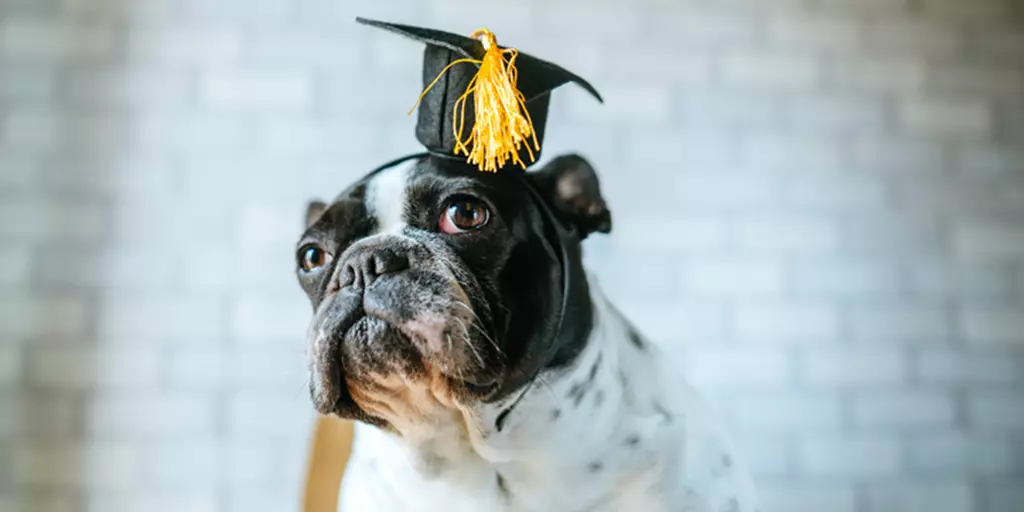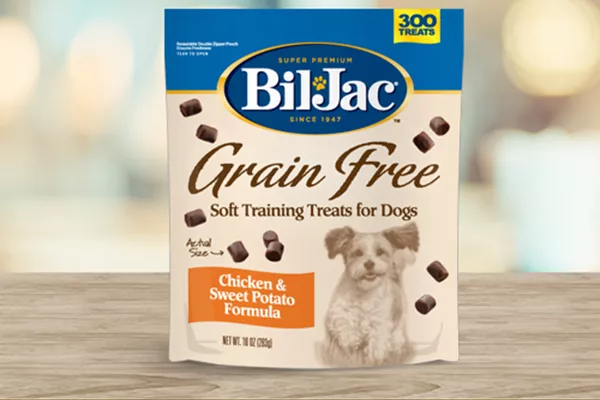As kids head back to school, it’s a great time to consider your dog’s education, too. Maybe it’s time to consider a little Dog Training 101. Before you try to tackle advanced tricks like playing dead and riding a surfboard, it’s a good idea for both you and your dog to master some basic training first. Fortunately, TV Show Host and Professional Animal Trainer Joel Silverman has some great tips to help you and your dog get back to basics.
Three Basic Tips for Training Your Dog
Determine Your Dog’s Personality
Before training begins, you’re going to need to figure out which treats will motivate your dog the most. Every dog is different, which plays a big factor in which treats are most effective.
“A dog’s personality really comes into play for training,” Silverman says. “If we’re using positive reinforcement, we want to use whatever treat is the most motivating to the dog.”
Silverman recommends starting with Bil-Jac Dog Treats because there are a good variety of taste options, they’re healthy, and dogs love them. You can experiment with different treats to see which ones your dog likes the most and use that as motivation for training.
Train on Elevated Places
Where you train your dog is also important to consider. Even before you try and train your dog how to sit and stay, Silverman recommends that you first try to guide your dog up on an elevated surface.
“I’m a huge fan of getting your dog on an elevated area,” Silverman says. “An elevated area is a defined place where you can train your dog to sit or stay. If a dog jumps off, you can simply guide the dog back up. The dog will start realizing ‘if I stay here, I’ll get rewarded.’”
There are several different surfaces that can work for this method. Anything from an ottoman to a pillow can work as a defined elevated place. You can also build your own elevated surface with a square piece of plywood and four-by-fours from your local home improvement store. As long as the surface is high enough so that you can tell if the dog is “cheating” on his commands, it can work.
Another advantage of elevated places is that they give you a great opportunity to let your dog learn a trick on his own.
“If your dog does jump off, don’t say ‘no’ or get upset,” Silverman says. “Instead, just guide your dog back up on the elevated area. This is true positive reinforcement because the dog is basically working for the treat. If you interrupt him when he gets down, you’re not giving him a chance to figure it out by himself rather than you making him stay there. Dogs are just like us; they have to learn.”
Don’t Overdo Training
It’s a tremendous feeling when your dog starts to learn certain tricks. While you may want to have your dog show off his new trick over and over again, Silverman cautions against making training sessions too long.
“Dogs are like us. If we have too much of something, we get burnt out on it,” he explains. “People will get excited during the first training and unintentionally burn the dog out. After that, training is no longer a fun thing for the dog.”
To prevent this, Silverman suggests only giving small amounts of treats during short training sessions. If a training session is only a couple minutes long, you’ll leave the session with the dog wanting more in the future. This also goes for the portions of the treats themselves. Silverman likes to use small dog training treats like Bil-Jac Little Jacs, but you can also break bigger treats into two or three pieces to not over-reward your furry friend too early in the process.
Training Your Dog — How to Sit
Now that you’ve learned some of the basics of dog training, it’s time to put your new found skills to good use. Follow these steps to teach your favorite furball how to sit.
- Guide your dog to an elevated place.
- Hold a treat near his nose and say the word “sit.” Guide your hand so that your dog shifts from a standing position down to a sitting position.
- Once your puppy sits, say the word “stay” and give him the treat.
- Release your dog from the sit position and repeat steps 1-3 while holding the treat farther away from his nose until he has it mastered!
Training Your Dog – How to Stay
Training your puppy or dog to “stay” can be one of the harder commands he’ll need to learn. Let’s face it, your best friend can be a bundle of energy. By using a combination of time, distance, and Bil-Jac Training Treats, you can teach your dog this helpful behavior.
- Follow steps 1 and 2 for “How to Sit.”
- Once he sits, hold up a treat by his nose. Say “stay” and hold up your other hand in front of him with your palm exposed.
- If your dog moves, patiently guide him back to his spot. If he holds his position, reward him with the treat.
- Repeat the process, each time increasing your distance from your dog and making him hold his position for a few seconds longer before giving him the treat.
Don’t get frustrated if your dog doesn’t pick up these tricks right away. It can take up to a week for your pooch to learn these behaviors, so set small goals and try to end each short training session on a positive note. After some time and patience, you and your dog will be ready to graduate on to some more advanced tricks.
Want to learn more about what you can do to help your dog have a happy, healthy lifestyle? Join the Best Friends Club today for more training tips, helpful articles, and members-only discounts on Bil-Jac products.




